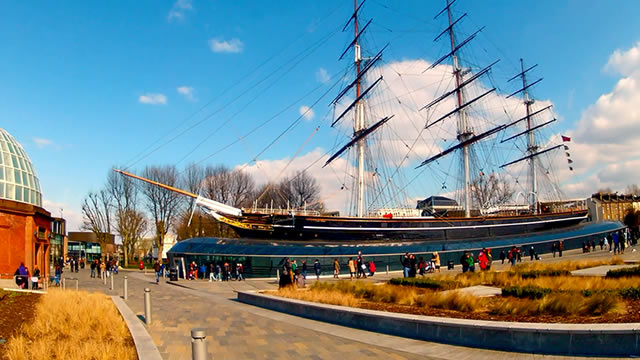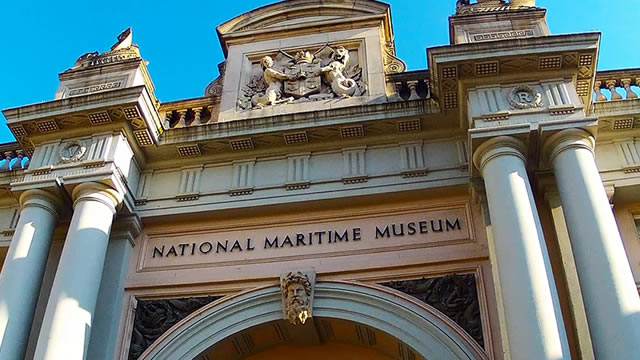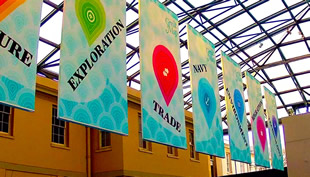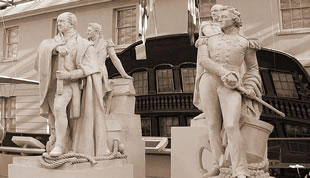
Looking for some interesting places to visit in London Greenwich? You will definitely be treated to a vast wealth of meridian, naval history and fascinating attractions you may never have realised existed. If you just dropped into Greenwich town or are maybe thinking of visiting as part of a London trip, it’s worth taking time to see what you shouldn’t miss visiting for fun, fascination, entertainment and relaxation. Here are some of the attractions and places you won’t want to miss:
Greenwich Park
If you like green parks then Greenwich has one of the best in London. With beautiful flower gardens, wooded areas and chestnut avenues on a 180-acre piece of beautiful landscape that slopes from Blackheath hill towards the River Thames. A visit to the Royal Observatory at the heart of the park will also give you a spectacular panoramic view of London.
The Royal Observatory
The Royal Observatory was designed by Sir Christopher Wren in the 17th century. The meridian building also houses a series of historic telescopes. Where else would you go to see the largest refraction telescope in the UK? You can also have a photo session along the brass rails that mark that position of the Greenwich Meridian.
The roof the building also has a red ball that is lowered from the top of its mast daily at 1pm GMT. This was once used to mark time for vessels on the River Thames. If you wander a little towards the eastern wing, you will see the planetarium that provides a 360 degree astronomical experience. There is also a nearby house that once belonged to Royal John Flamsteed. Here, you get to see some of the belongings and the galleries where Royal John used to work. While there, you can clearly view the natural beauty of fauna and flora across the park.
National Maritime Museum
The National Maritime Museum incorporates the earliest English palladium architecture, best known as Queen’s house, which was built by Anne, James 1’s wife. It has classical interior decor with Tulip staircases originally design by the renowned architect, Inigo Jones. The museum houses models and displays arranged in chronological order to represent Britain’s maritime history that spans from Tudor times to the early 19th century. There are also preserved navigational charts and instruments.
If you get sometimes to visit the Barge House, you will find Barges that once belonged to Frederick Prince and Mary II of Wales. Other displays include a collection of seascapes and portraits by Hogarth, Reynolds and Turner. You will also get to see the blood stained uniform of Nelson, which is a showpiece simple for the Battle of Trafalgar.
The Fan Museum
If like historical artefacts and classic collectibles then you will definitely find something of interest at the Fan Museum. This is the only museum in the United Kingdom, well, in the whole world actually, that is completely dedicated to the art and craft of fan. It was established in the 17th century with an adorable Georgian design and displays elegant and fashionable accessories. The Fan museum itself is a piece of artistic and architectural gem and houses over 3, 500 fans.
Old Royal Naval College
Royal Naval College is definitely one of the most remarkable landmarks in Greenwich. This is one of those places to visit in London Greenwich that you just shouldn’t miss. Well-kept landscaped gardens and beautiful buildings set it apart, in fact it is one of the most important UNESCO world heritage sites. Not only that, but it’s buildings have attracted the interest of Hollywood and it has been used as a location for many films including Four Weddings and a Funeral, Patriot Games, The Muppets, Thor Dark World, etc…
Visitors get to see, for free, the amazingly painted Hall and the chapel. This is also where Lord Nelson was laid in state before his burial. Royal Naval College is also the home of Trinity Music College and the renowned University of Greenwich. You can also stop by Discover Greenwich where you’ll find historical facts and great exhibitions that tell more about the rich history of maritime Greenwich.
The O2 Arena
The O2 Arena started as a millennium celebration venue and has now ballooned excitingly to earn a celebrity status. Now known as the Dome, Arena, the O2 hosts superstars from all over the world who come to entertain their fans. If you like concerts, shows, movies, and entertainment then this is the place to be. The Arena boasts brilliant exhibitions and well known restaurants such as Raan, Pizza express, Wasabi and Nandos.
The Cutty Sark
The Cutty Sark is one of the greatest and fastest ships of her time. The British tea clipper ship was built in the 19th century for Jock Willis shipping ventures. Her decks tell a rich history of merchant seamen that sailed her over a century ago.
Visitors are welcome on board to explore this marvellous monument and glorious testimony of the bygone days of sail that lives to be remembered. Venture beneath and aboard and grab some food at the Even Keel Café. Have a taste of the yummy homemade cakes and fruits salads and a wide range of other family meals or wander through the Cutty Sark gift shop and pick some souvenirs.







